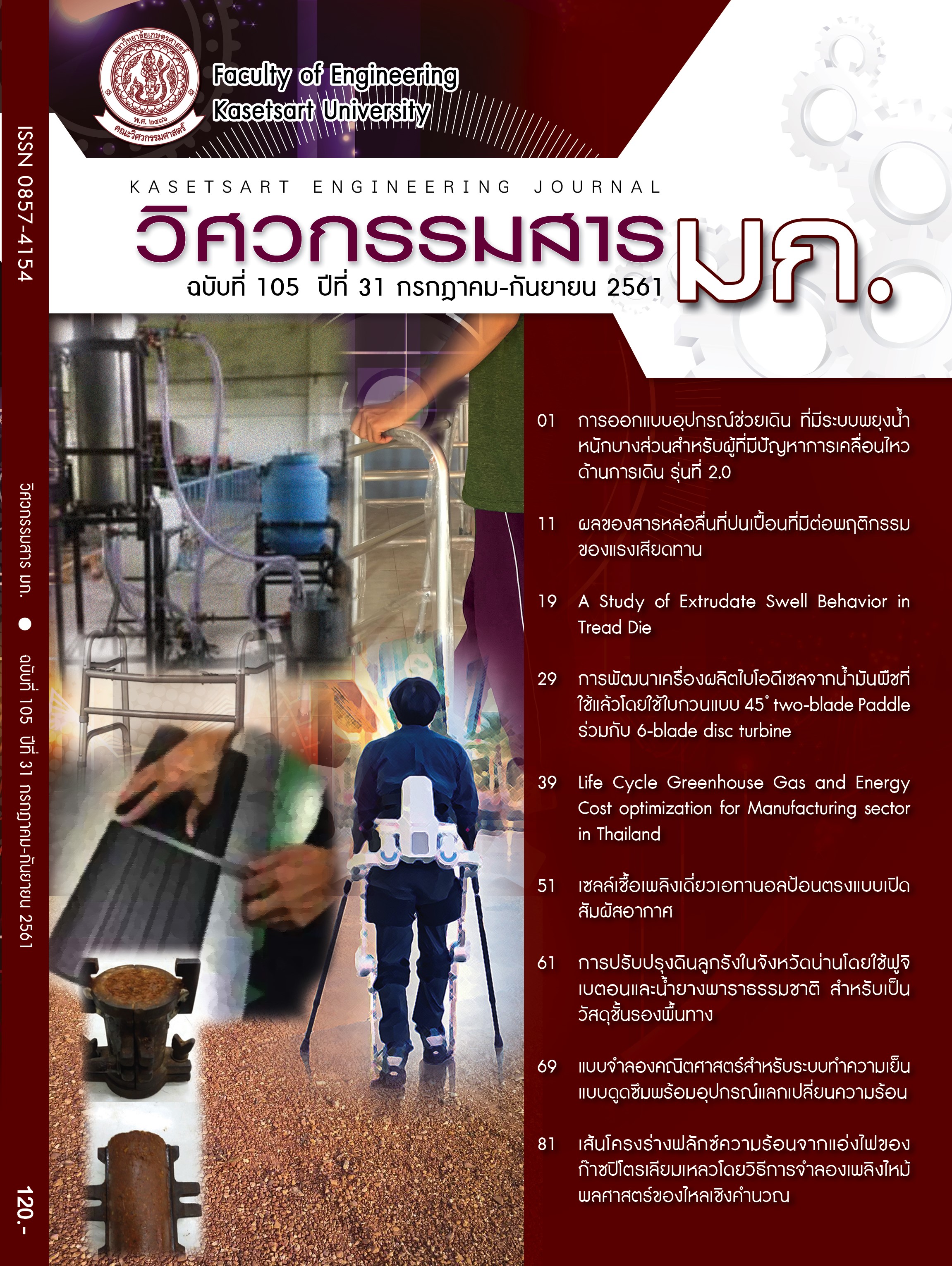Life Cycle Greenhouse Gas and Energy Cost Optimization for Manufacturing Sector in Thailand
Keywords:
life cycle greenhouse gas emissions, energy cost, optimization, manufacturing sector, thailandAbstract
Energy consumption in the Thai manufacturing sector covers around 36% of the total
energy demand. The high energy consumption causes many problems such as energy limitation,
energy cost, and GHG emissions. Concerning the sustainable development for the manufacturing
sector, the energy consumption should consider not only the energy demand but also energy
cost and GHG emissions. A multi-objective optimization model for energy consumption in the
manufacturing sector was developed from a predictive model and a second-order Taylor series
expansion. GHG emissions were calculated based on an LCA concept. The energy demand in the
target year 2020 was predicted as BAU, and the multi-objective optimization model was used to
find the optimal energy consumption which allocated energy resource type in each manufacturing
subsector for minimising energy cost and GHG emissions. The optimal total energy consumption
for 2020 was found to be 29,665 ktoe, which is less than that predicted by BAU by 2,542 ktoe
(8%). This is equal to a reduction of 11,520 GgCO2e GHG, overachieving the Thailand NAMA
roadmap 2020 for energy in the manufacturing sector. The results can be used for allocating
the energy resources for low GHG emissions and total energy cost while maintaining adequate
energy demand.


